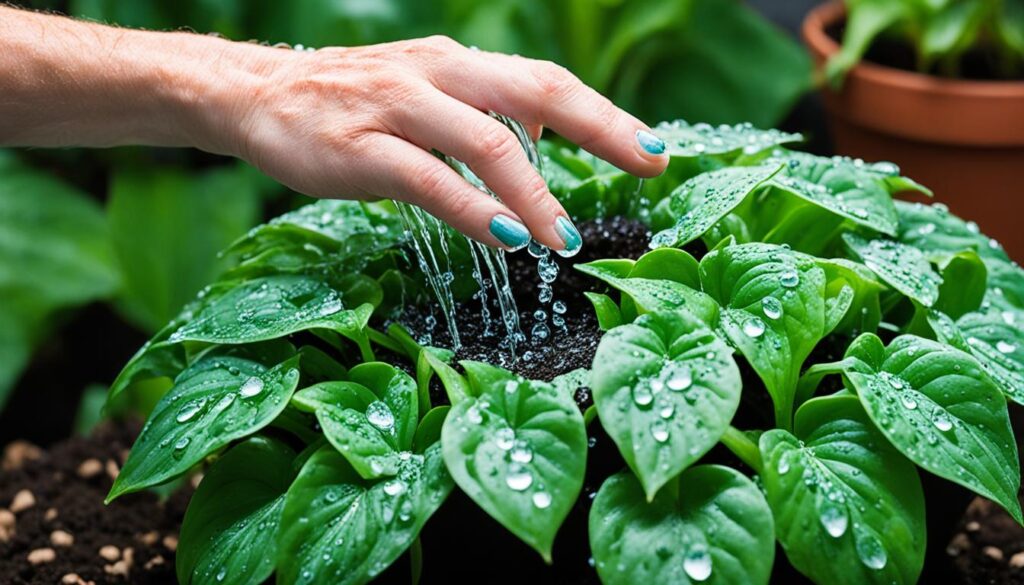The Scindapsus is a great choice for indoor plants. It’s known for being tough and having beautiful leaves. This guide will give you key tips to make your plants grow well and look great.
You’ll learn about the different types of Scindapsus. You’ll find out what light conditions they need. Also, you’ll get tips on watering and the best soil for your plants.
Good care makes your Scindapsus last longer and stay healthy. It turns into a beautiful plant in your home. For more tips on growing plants, check out this link.
Understanding Scindapsus Varieties
Scindapsus plants come in many sizes and look beautiful. They are loved by indoor gardeners. Each type adds its own beauty to your home. Knowing about these varieties helps you take good care of them.
Popular Scindapsus Types
Scindapsus pictus is a favorite for its silver leaves. The Golden Pothos is another favorite, with its long vines and green leaves. These plants make any garden feel warm and welcoming.
Characteristics of Scindapsus pictus ‘Exotica’
Scindapsus pictus ‘Exotica’ has big, heart-shaped leaves with silver dots. It likes bright, indirect light and well-draining soil. Make sure the soil is moist but not too wet.
This plant can grow up to 10 feet long. It’s beautiful in any room. But, it’s toxic to cats, dogs, and horses. So, keep it away from pets.
Differences Between Scindapsus and Pothos
Knowing how Scindapsus and Pothos are different helps with plant care. They are in the same family but have different needs. Scindapsus pictus needs more light and humidity than Pothos.
This is important for keeping your plants healthy and looking good.
For more plant care tips, check out this comprehensive gardening guide. It has advice on many plants.
Essential Light Requirements for Scindapsus

Knowing what light Scindapsus needs is key for healthy plants. These plants do best in the right lighting. We’ll cover how to get the best light and avoid too much sun.
Optimal Light Conditions
Scindapsus plants love bright, indirect sunlight for 6 to 8 hours a day. In good light, they grow lush and show off their colors. Not enough light makes them stretch out and have small leaves.
Check if your plant gets enough light by looking at east-facing windows or bright rooms with filtered light. Following these tips keeps your Scindapsus looking great. For more tips on garden lighting, see this resource.
Avoiding Direct Sunlight
It’s important to give your Scindapsus enough light but avoid direct sun. Direct sun can burn the leaves and slow growth. Keep your plant in a bright spot but not right under the sun.
Use sheer curtains or blinds to soften the sun’s rays. This keeps your Scindapsus happy and healthy.
| Condition | Ideal Light | Excess Some | Action Required |
|---|---|---|---|
| Bright, Indirect Light | Ideal for growth | None | None |
| Poor Lighting | Low leaf size | Leggy growth | Relocate to a brighter spot |
| Direct Sunlight | Burnt leaves | Stunted growth | Move away from direct sun |
Watering Your Scindapsus Plant

Watering your Scindapsus plant right is key to its health. It likes the soil to be moist but not too wet. Knowing how to water it will keep it looking great.
Determining Watering Frequency
Wait to water until the top 2 to 3 inches of soil feel dry. You’ll water more in spring and summer, about once a week. But, you’ll water less in fall and winter when it’s cooler.
Signs of Overwatering and Underwatering
It’s important to know when your plant has too much or too little water. Too much water can cause yellow leaves and root rot. Not enough water makes leaves curl or droop. Paying attention to your plant helps you care for it better.
Follow these tips and check on your plant often. This will help your Scindapsus stay healthy. For more advice, visit Roaming Roots Plant Co. They offer expert tips on many plants.
Optimal Soil Conditions for Scindapsus
Creating the right environment for your Scindapsus is key to its health and growth. Understanding soil conditions for Scindapsus boosts your plant’s vitality and longevity. Choosing the right potting mix is crucial for moisture and air.
Choosing the Right Potting Mix
Look for a well-draining soil for tropical plants when picking a potting mix. A mix with organic matter like coco peat, perlite, and orchid bark is best. This blend keeps moisture right and gives roots the air they need.
It stops water from staying in one place, which is key to avoiding root rot. This keeps your Scindapsus healthy.
Importance of Drainage
Drainage is also crucial for your potting setup. It lets excess water escape, stopping it from building up at the pot’s bottom. Make sure your container has enough drainage holes.
By focusing on these soil conditions, you make a great home for your Scindapsus. This lets it grow well and show off its beautiful leaves.



